There are a few possible explanations for why England and Denmark might have similar looking flags. One possibility is that the two countries share a common heritage, which is reflected in their flag designs. Another possibility is that the flags are simply a coincidence, and there is no real connection between them.
So which is the case? Take a look at our comparison of the history, designs and usage of the Denmark vs England flags to see just why they may be so similar.
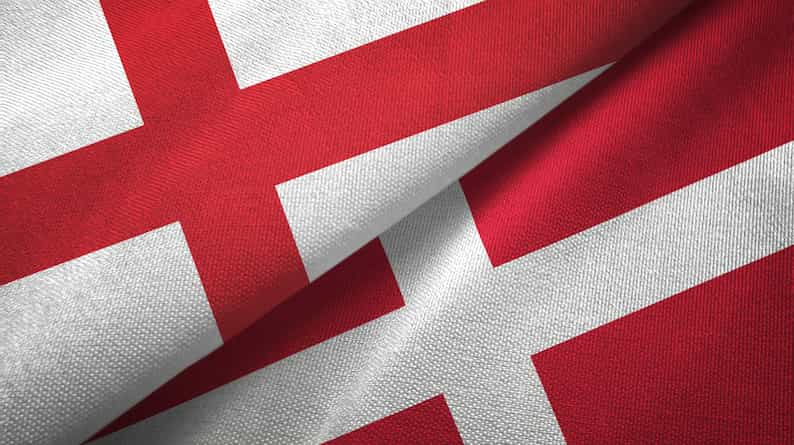
Table of Contents
Why do England and Denmark have similar flags?
It is likely a coincidence that England and Denmark have similar flags. The Danish flag, which dates from 1219, features the Nordic Cross, whereas the English flag was first used to identify English soldiers in the 1270s and is derived from the Cross of St. George.
In fact, the Danish flag (known as the “Dannebrog”) is the oldest continuously used one in the world, having (supposedly) fallen from the sky during the Battle of Lindanise, also known as the Battle of Valdemar, near what is now Tallinn in Estonia on 15 June 1219. Not a bad thing for Denmark to be famous for – and to bust out at your next trivia night!
The story goes that the Danish army was losing the battle and so King Valdemar II prayed to God for something to help them win. The flag fell from the sky, which rallied the troops and gave them the strength to defeat the enemy.
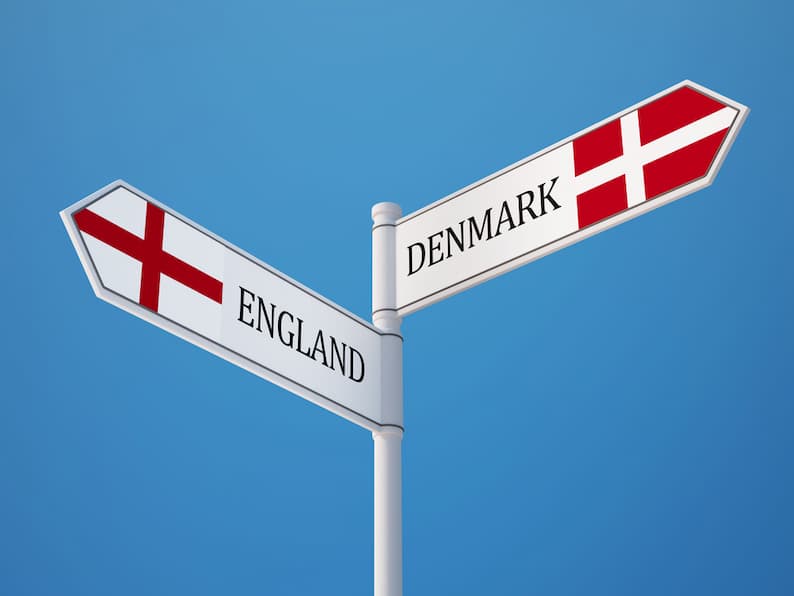
The red cross of the English flag, on the other hand, appears to have first been worn by English soldiers during the time of King Edward I who was King of England from 1272 to 1307. That said, it also seems that the St. George’s Cross was used by English ships earlier than that, in 1190, taken from the Republic of Genoa to benefit from the protection of Genoese ships in the Mediterranean.
In any case, while red crosses on white fields were linked to England at various times throughout history, it wasn’t used as an actual, definitively recognized symbol of England until much later.
So while it’s true that comparing the Denmark vs England flags show some clear similarities and it’s also the case that the two countries had confirmed links with one another (including trade and wars), it’s likely a coincidence that they appear almost the same. It’s also true that many flags were influenced by Christianity so having a cross – whether it’s the Nordic Cross or the Cross of St George – reflects each country’s link to the Christian faith.
And speaking of these two countries… What Do People in Denmark Speak – and Can You Speak English There?
Denmark vs England flags: Key differences
While the similarities between the Denmark and England flags are clear, there are also some key differences that further suggest that they may not have actually been influenced by one another.
Clearly, the colors are reversed. The use of the same colors may, however, be a coincidence. As mentioned above, England’s use of red and white seems to have been for reasons separate from anything to do with the Danes. From Denmark’s side, the white cross on a red background was actually used as a banner in war by the Holy Roman Empire in the 1100s, so it’s very likely to have been an influence on the Danish flag.
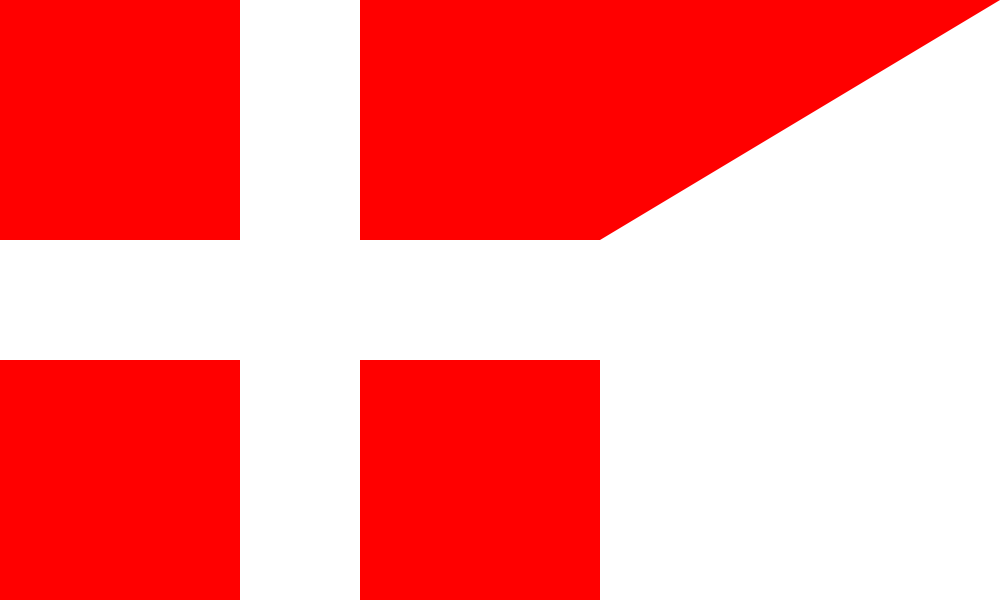
The other main difference is the off-center cross on the Danish flag. This is a clear link to Christianity as, when you put the flag on its side, you can clearly see the Christian cross as you may know it more commonly. Some also say that it may reflect the fact that the flag of the Danish navy (which we discuss further below) is slightly different, so the cross had to be pushed to the left to accommodate this design.
Why does England have a Nordic cross?
The flag of England does not have a Nordic cross. Instead, it features the Cross of St. George which is different in that the cross is centered. The Nordic cross, on the other hand, is shifted to the left. It is also thought that they have different historical origins.
Given the red-white color scheme and the similar cross, it’s understandable that a lot of people confuse the Denmark vs England flags. However, the only countries that use the Nordic cross are, unsurprisingly, in the Nordics. There are, however, non-Nordic regions that have the Nordic cross in their flags, although none of them are actual countries.
It’s also worth noting that the Nordic cross does not have to be red and white, as evidenced by the other Scandinavian flags that don’t follow these colors.
Does Denmark have 2 flags?
Denmark does have two flags which are legally considered different from one another. They are the Splitflag and Orlogsflag, both of which feature the typical Nordic cross design but with a split swallow tail ending. In addition, the Orlogsflag, which can only be used by the Danish navy, is longer and a darker red color.
The Orlogsflag can also only be called as such if there are no other markings on it. This differs from the Splitflag which can have certain symbols on it, such as the royal standard of Denmark, with the monarch’s coat of arms in the square.
You can see Denmark’s two flags below.
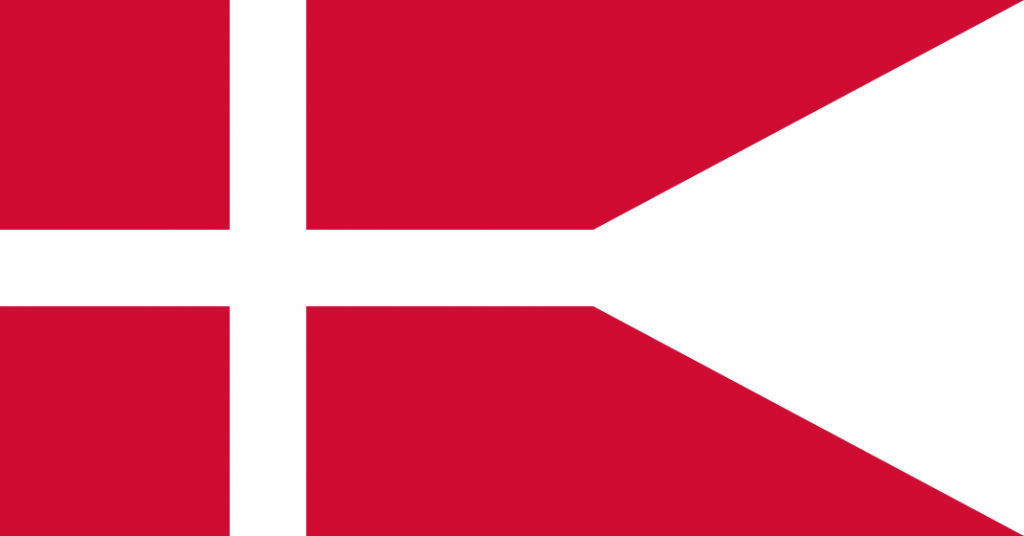
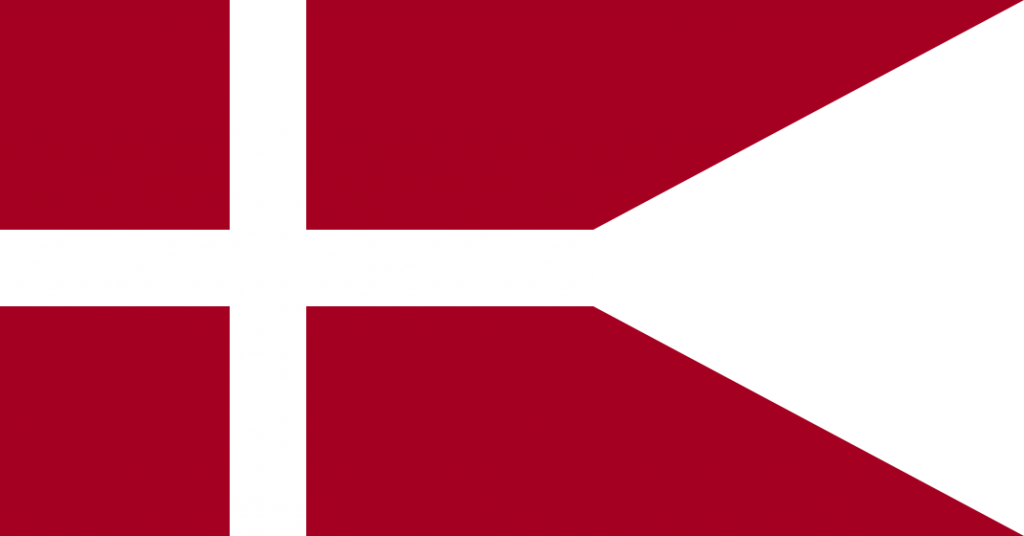
What flag is similar to Denmark?
Each of the Scandinavian flags are similar to that of Denmark, with the flags of Sweden, Norway, Finland and Iceland all featuring the Nordic cross. However, the colors are mostly different in each case and the bars of the cross can sometimes be thicker than the Danish flag.
There are also other flags throughout the world that are similar to the Danish one, even if they aren’t actually of countries. For example, a province in Ukraine called Volyn Oblast uses this flag, which is extremely similar to the Danish flag. There are also, as mentioned earlier, a number of regions outside of Scandinavia that appear to feature the Nordic cross so are of similar design to the Danish flag, even if the colors are different.
Related: Denmark vs Finland: Which Is Better to Visit (or Live In)?
Why do Nordic flags have a cross?
The Nordic flags have a cross due to it being a symbol of Christianity. When Denmark, Sweden, Norway (including Iceland) and most of Finland were united as the Kalmar Union from 1397 to 1523, the flag was a red Nordic cross on a yellow background. As they gained independence, the cross was maintained on each of their flags.
The most recent examples of this include Iceland, which gained independence in 1915, and Finland, which separated from Russia in 1917. In both cases, they adopted national flags featuring the Nordic cross, with the flag of Norway being the first in 1821 to include three colors.
